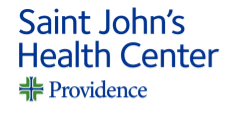
During spring, trees and grasses begin releasing pollen into the air. When people inhale this pollen, it can trigger allergies. In the United States, these allergies can occur from February until early summer, depending on the state.
Allergies can come in two forms:
- Seasonal: Symptoms occur in spring, summer, or fall and are usually due to pollen or mold spores.
- Perennial: Symptoms occur all year round. Causes include dust mites, pet dander, mold, and cockroaches.
Allergies that occur in spring are known as spring allergies, hay fever, or allergic rhinitis.
Causes
An allergy occurs when a person’s immune system overreacts to an otherwise harmless substance, known as an allergen. When a person has an allergy, the body produces antibodies that travel to the cells that release histamine and other chemicals.
Histamine causes swelling in the nose and eyes in an attempt to stop allergens entering the body. Histamine also causes sneezing to remove allergens from the nose.
The main cause of a spring allergy is the pollen that grows and reproduces during the season.
Pollen
Plants produce these tiny grains for reproduction. While some plants rely on insects to spread their pollen, other plants use the wind. Pollen spreads by the wind is the main cause of allergy symptoms in people with pollen allergies.
Trees begin to release their pollen in early spring. Depending on the state, different trees will begin pollination earlier, or later, in the season.
The Asthma and Allergy Foundation of America (AAFA) list the trees most likely to cause allergy symptoms: They include:
- alder, aspen, ash, beech, birch, cedar
- elm, olive, oak, willow, poplar
Grass releases its pollen later on in the spring. Grass pollen can also cause allergy symptoms in people with pollen allergies.
According to the AAFA, the most common grasses that cause allergic reactions are:
- orchard, Kentucky, Bermuda, Johnson
- rye, sweet vernal, Timothy
Changes in weather can also affect how much pollen these plants release. Warm days increase plant growth and fertilization, whereas rainy days dampen the spread of pollen. Windy days help the pollen to spread more easily, which can increase a person’s allergy symptoms.
Symptoms
Spring allergies can cause the following symptoms:
- red and watery eyes
- sneezing
- runny nose
- itchy eyes, nose, ears, and mouth
- stuffy nose due to congestion
- puffy eyes
- post-nasal drip, where there is a sensation of mucus dripping down the back of the throat
- hives (rare)
- coughing, wheezing, or difficulty breathing
Prevention
To prevent exposure to pollen and mold, take the following steps:
- check local pollen counts and limit time outside when pollen levels are high
- keep garden grass short
- wear a dust mask when mowing the lawn and gardening
- avoid dead and rotting logs
- keep all windows closed if possible and use allergy-friendly filters on air conditioning units
- bathe and wash hair daily to remove pollen
- wash bed linen once a week
- change and wash clothes after being outdoors
- dry clothes in a dryer if possible instead of outdoors
- remove shoes before entering the house
- wear hats and sunglasses when outside to limit pollen entering the eyes and landing in the hair
- vacuum floors at least once a week
Treatments
Treatments for spring allergies can include taking medication, as well as trying some home remedies.
Medication
There is a range of medications available to treat spring allergy symptoms. These medications are available both over the counter (OTC) and by prescription.
- Antihistamines: These can relieve symptoms, such as itchy eyes and nose, runny nose, and sneezing. Antihistamines are available in pill, nasal spray, or liquid forms.
- Nasal corticosteroids: A type of nasal spray that reduces inflammation. Doctors consider them the most effective medication for allergic rhinitis.
- Decongestants: These work by shrinking the lining of the nasal passages and reducing stuffiness. Decongestants come in pill, liquid, drop, and nasal spray form. Long-term use can cause side effects.
- Leukotriene receptors: These tablets block the action of certain chemicals involved in allergic reactions.
- Eye drops: Eye drops treat eye allergies. Eye drops can provide short-term relief for redness, itchiness, and swelling.
- Additional nasal sprays: other sprays are available to soothe dry nasal passages or thick mucus, reduce post-nasal drip symptoms, and help prevent allergic reactions.
Immunotherapy
Immunotherapy is a long-term solution that aims to desensitize people to their allergies. Doctors may use immunotherapy to treat people who experience side effects or feel little or no benefit from medication.
There are two types of immunotherapy: allergy shots and sublingual tablets. Allergy shots involve having allergen injections for 3–5 years. These injections help build up resistance to the allergen.
Sublingual tablets only treat certain types of allergies. They require a person to dissolve a tablet under their tongue every day for up to 3 years. A person can start taking the pills in the months before spring.
Home Remedies
Numerous natural remedies may bring relief to people experiencing spring allergies.
Steam inhalation
Steam inhalation is widely used for allergic rhinitis and can soothe and open nasal passages.
To inhale steam, place a bowl of boiling water on a table. Cover head, face, and bowl with a towel and breathe in the vapors.
Take care to avoid scalding the skin when using hot or boiling water.
Saline rinse
Saline rinses can help relieve stuffy nose and congestion by thinning out extra mucus from the nasal passages. The solution can also clear out allergens from the nostrils and sinuses.
There are several saline rinses available without a prescription. Alternatively, a person can make their own.
Acupuncture
Acupuncture involves placing thin needles into specific parts of the body for therapeutic purposes. Research indicates that people who had acupuncture noticed fewer nasal symptoms and improved quality of life.
Other natural remedies include nettle leaves, which may reduce nasal swelling, according to a 2017 study.
A study published in The American Journal of Clinical Nutrition indicates that some probiotics also may improve the quality of life for people with allergies. However, scientists need to do more research into both.
Diagnosis
A doctor may perform several tests to diagnose a spring allergy, including:
- Skin prick test: A doctor scratches a small amount of the allergen into the person’s skin to look for any reaction. Results take around 10–20 minutes.
- Intradermal test: This is usually more sensitive than a prick test. It involves the doctor injecting a tiny amount of the allergen under the skin to see if there is a reaction.
- Blood test: The doctor will take a blood sample and send it to a lab. The lab technician will add the allergen to the sample to see if the number of antibodies produced increases.
The doctor may ask the person about their symptoms, home, and work environments, and family medical history.
Summary
Spring allergies affect millions of people in the U.S. every year, with 19.2 million receiving a diagnosis of hay fever in 2018, according to the Centers for Disease Prevention and Control (CDC).
Spring allergies respond well to a variety of treatments, both OTC and prescription. Natural remedies may help soothe symptoms. However, a person should consult a doctor if their symptoms become severe or unmanageable.
At Pacific Eye & Ear Specialists, we employ thorough evaluation and treatment regimes. Call our office today for an appointment with our top Los Angeles ENT physicians and Audiologists. If you have any questions, feel free to call us at (310) 477-5558.







